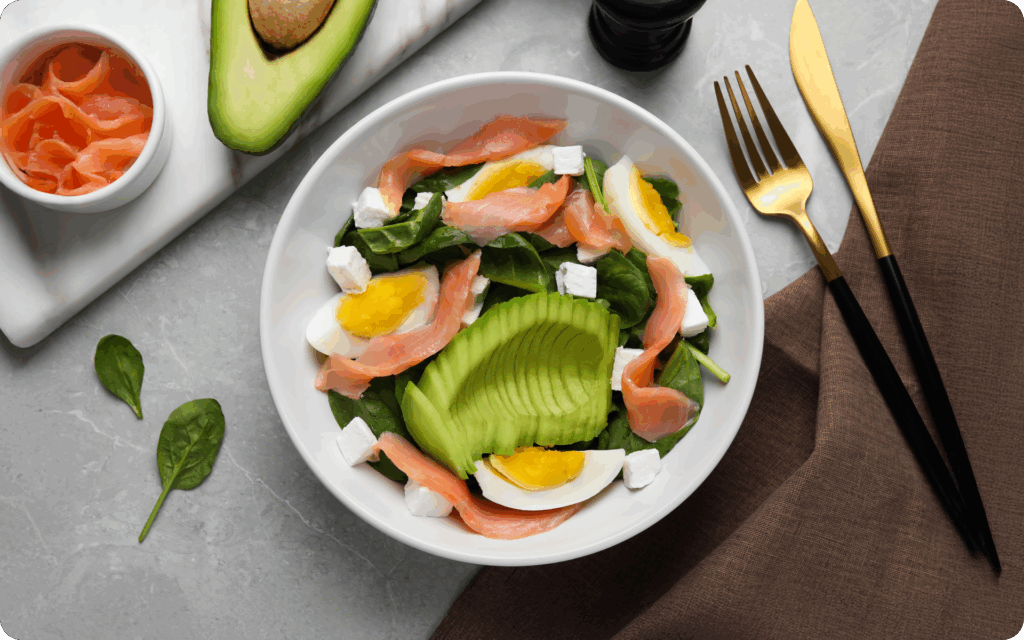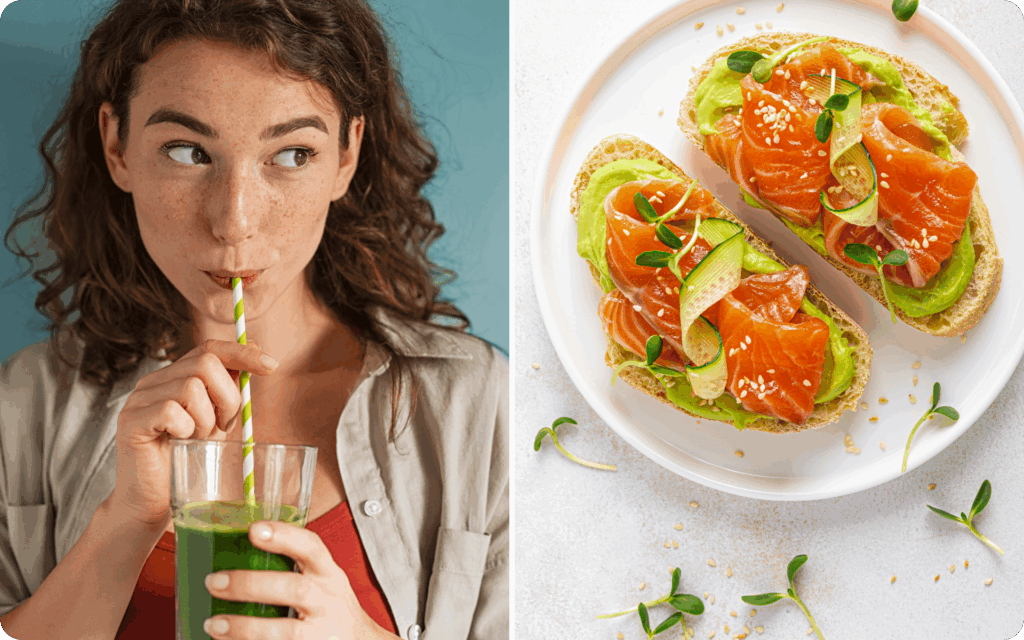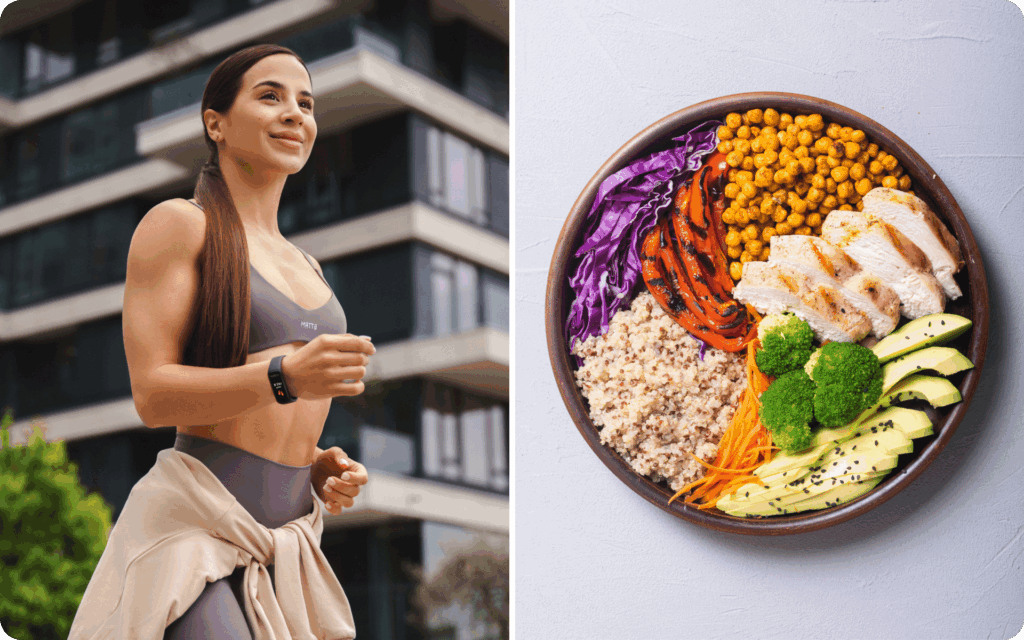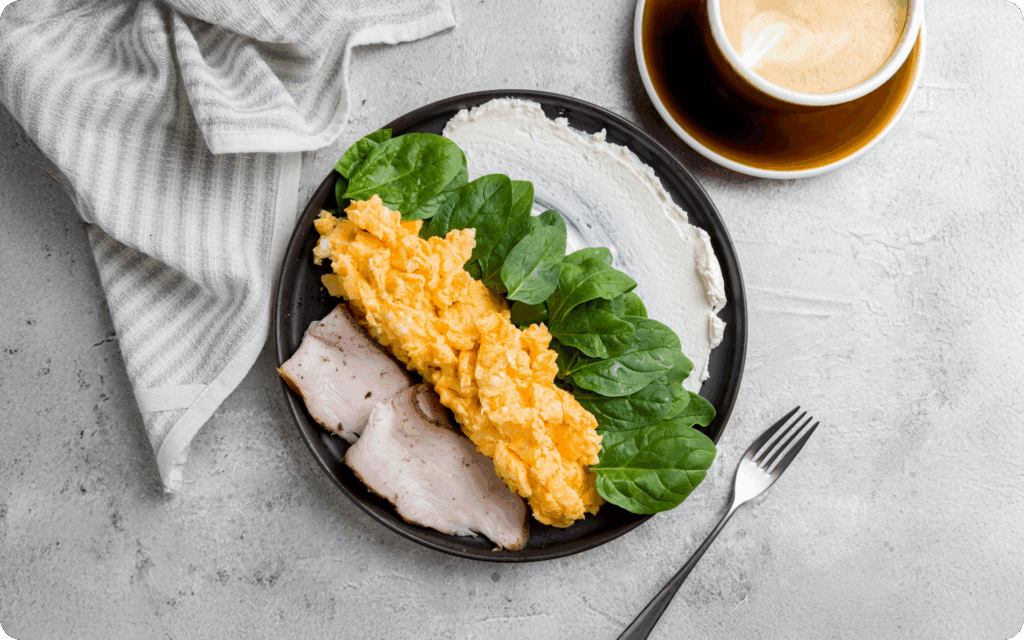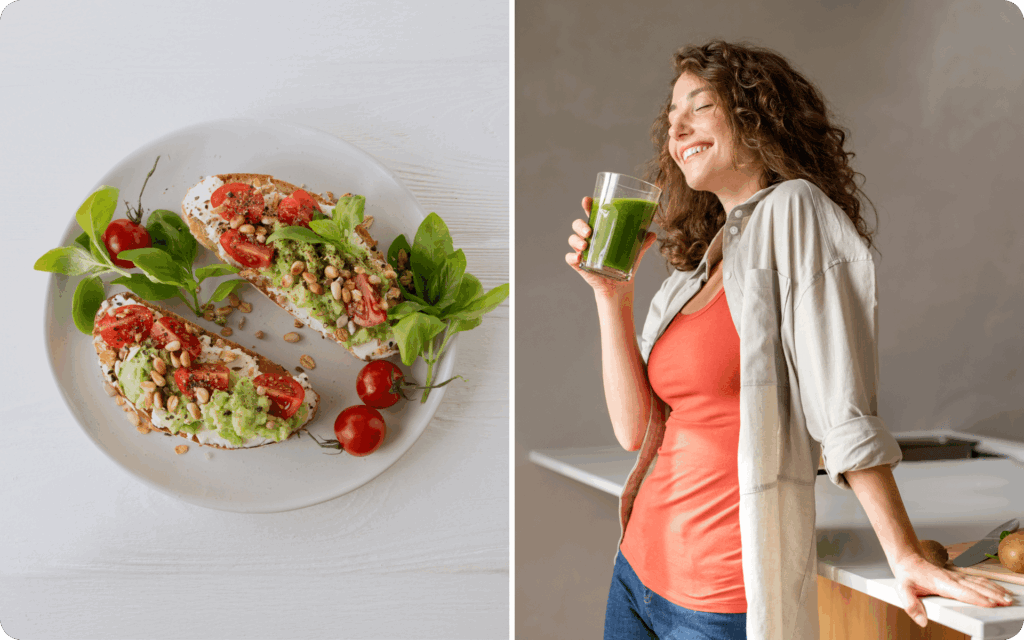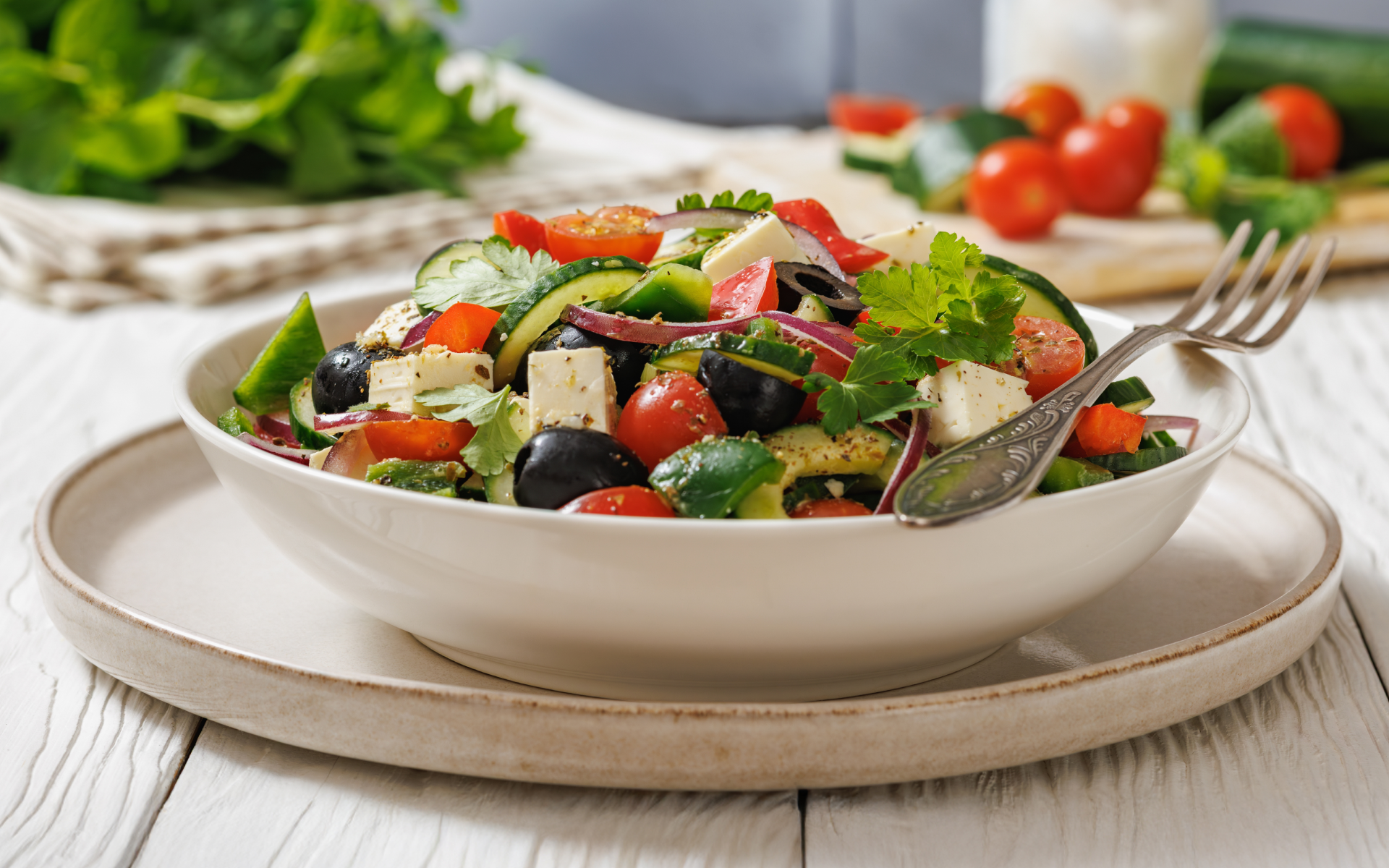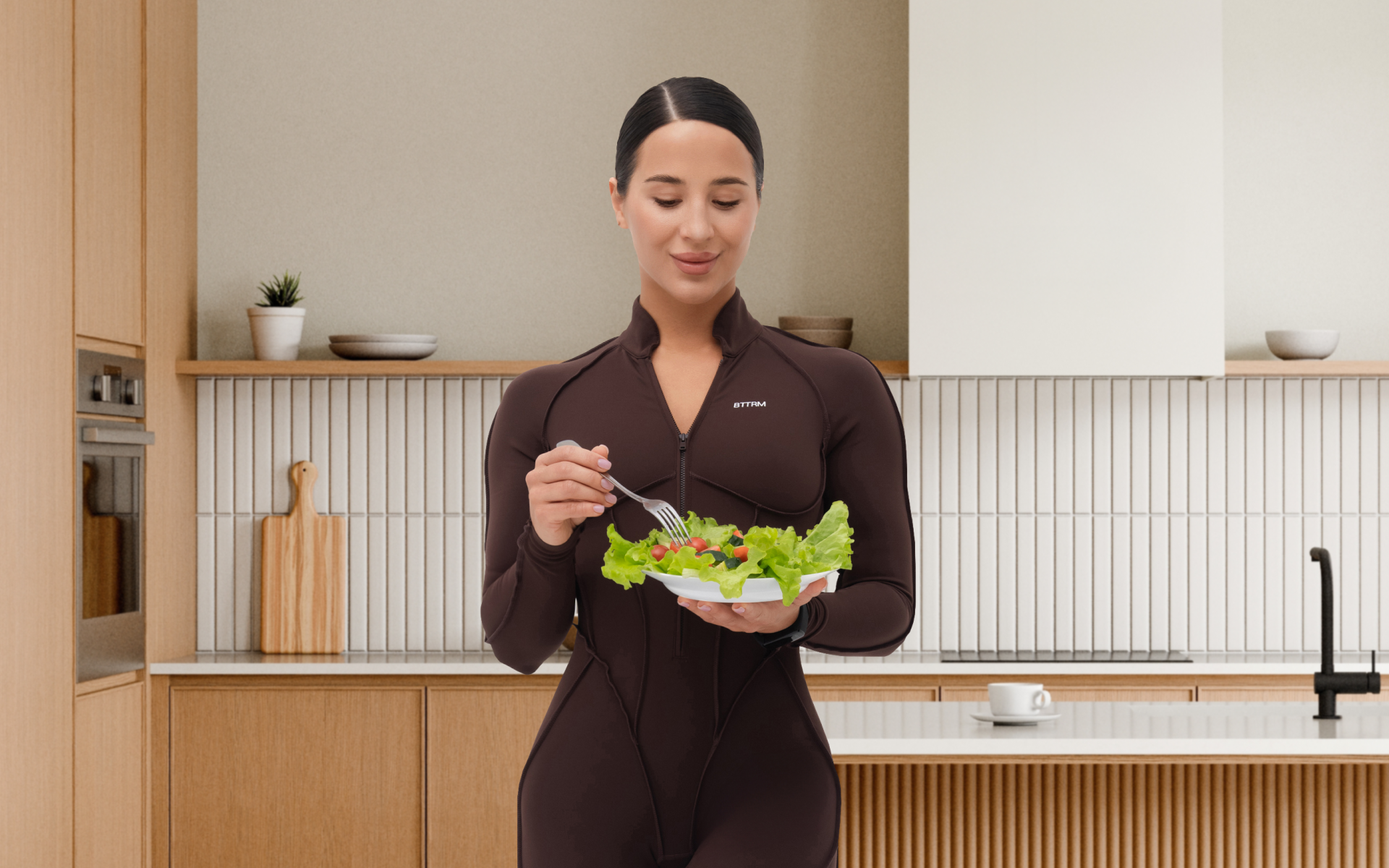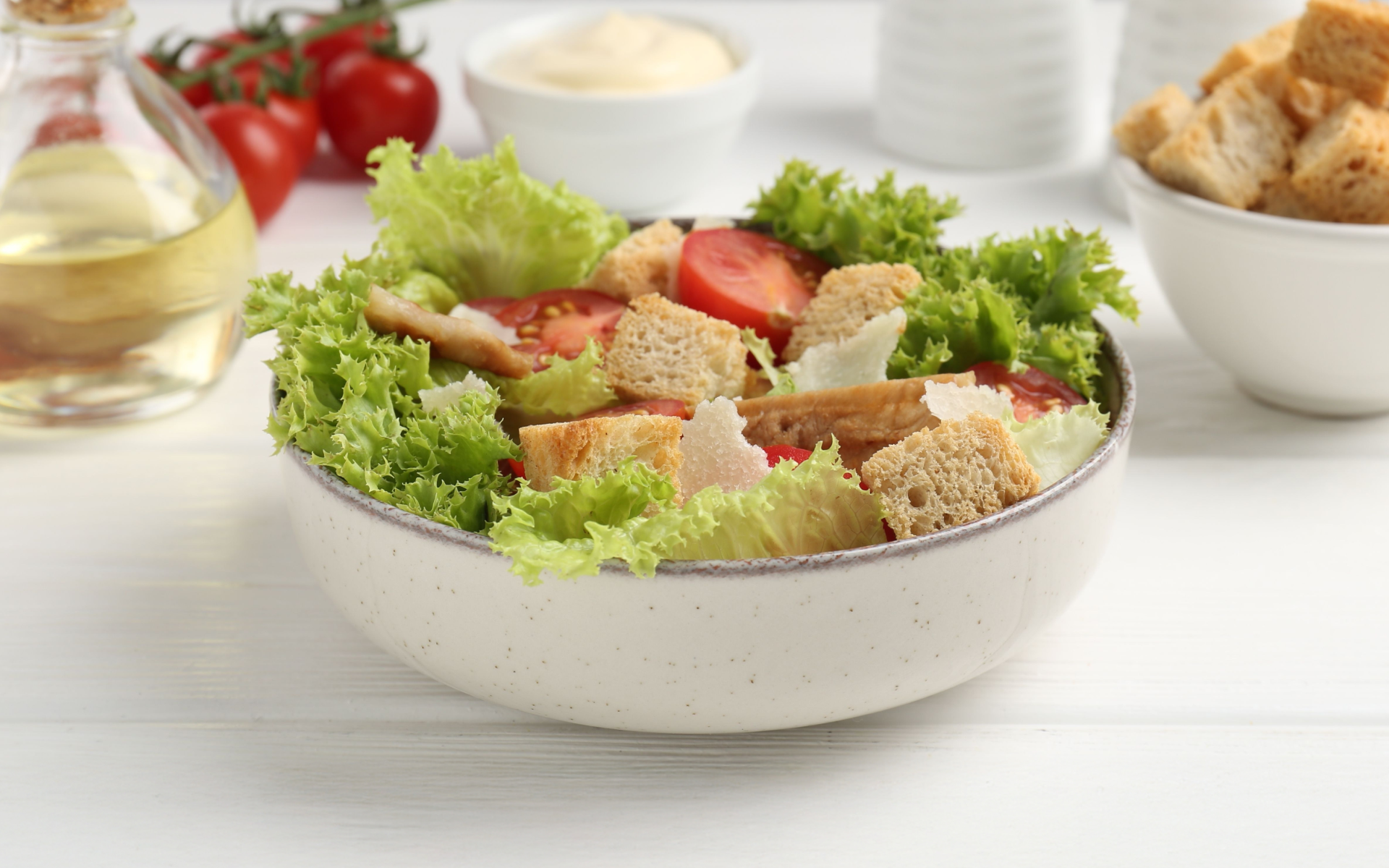What Is A High-Protein, Low-Calorie Diet Meal Plan?
In the universe of diets and meal plans, the high-protein, low-calorie plan generates a lot of interest. But what exactly does this approach entail?
In essence, it is a nutritional strategy that prioritizes protein intake while restricting total caloric intake. However, mere caloric restriction and increased protein consumption are not enough. The key lies in protein quality, macronutrient distribution, food selection, and individual adaptation to specific needs and goals.
A high-protein, low-calorie meal plan is not a specific diet with a rigid list of allowed and prohibited foods. Instead, it is a set of flexible dietary guidelines aimed at achieving a particular nutritional balance.
In this article, we will delve into the benefits of this type of plan, the ideal foods to include, and how to design it safely and effectively.
Can I Lose Weight On A High-Protein, Low-Calorie Diet?
Before answering this question, I’d like to clarify a few concepts. What does “high in protein” and “low in calories” really mean? There is no universal definition, since the exact amounts vary depending on individual needs, level of physical activity, age, sex, and body composition.
But in general, we could say that:
- High in Protein: Generally considered a diet where proteins make up a high proportion of total daily caloric intake, typically between 25-35%.
This percentage could translate to consuming somewhere between 1.2-2.0 grams of protein per kilogram of body weight per day, or even more for athletes and highly active people (1).
- Low in Calories: Calorie restriction means aiming to consume fewer calories than the body expends. The amount of caloric reduction needed to lose weight varies considerably from person to person.
A calorie deficit is the difference between calories consumed and calories expended in a given day. A moderate deficit, typically between 500-750 calories per day, is usually more sustainable and healthier than more extreme deficits (2).
The BetterMe: Health Coaching app will provide you with a host of fat-frying fitness routines that’ll scare the extra pounds away and turn your body into a masterpiece! Get your life moving in the right direction with BetterMe!
Now, we could say that yes, you could lose weight with a high-protein, low-calorie diet, but it’s essential to understand that a high-protein plan for weight loss involves more than just calculating protein and calorie amounts. The quality of the foods we eat is just as critical, if not more so, than before.
Likewise, lifestyle factors matter: physical activity, stress management, and sleep quality. Keep reading as we further break down which foods are beneficial for this plan in terms of nutritional quality.
Check our blog for ideas such as high-protein meals for weight loss to get started.
Read more: 20 Grams of Carbs Example: Ultimate Food List for Everyday Use
What Food Has The Highest Protein But Lowest Calories?
Continuing with the concepts, it is crucial to understand the relationship between proteins and calories.
- Proteins are essential macronutrients that play a key role in building and repairing tissues, producing enzymes and hormones, and transporting nutrients (3).
- Calories, on the other hand, are a unit of energy we obtain from food, including protein. If we consume more calories than we burn, we could store that excess as fat (4).
Therefore, a food with high-protein density and low caloric density would allow us to reap the benefits of protein without significantly pushing up total calorie intake.
In general, lean animal-based foods are excellent sources of protein with relatively few calories.
Think of, for example:
- Egg whites: Almost pure protein, ideal for adding to shakes or omelets without adding many calories (5).
- Skinless chicken breast: A classic for its high-protein content and low fat (5).
- White fish (cod, hake): Offers a significant amount of protein and few calories, in addition to being rich in other essential nutrients (5).
However, we should not overlook plant options. While plant protein is often “less complete” (in terms of all the essential amino acids), combining different plant sources can yield a complete amino acid profile.
Some interesting options are:
- Lentils, beans, and other legumes: In addition to lean protein, they provide fiber, which contributes to satiety and digestive health (5).
- Tofu and other soy products: A soy-based product with good protein content and adaptable to different flavors (5).
It is important to emphasize that food combination is key to a balanced diet. While focusing on high-protein and low-calorie foods is a good starting point, we must also consider the presence of other macronutrients, such as carbohydrates.
If you’re interested in exploring more specific options, you can consult a high-protein low-carb diet meal plan.
What Are Good Low-Calorie High-Protein Meals?
We have already mentioned some examples of animal- and plant-based foods that stand out for their high-protein and low calories. However, variety is key for a balanced and sustainable diet in the long term.
Therefore, let’s broaden the range of options again, considering both animal and plant sources:
- Low-fat cottage cheese: This dairy product is an excellent source of slow-digesting casein protein, ideal for satiety and muscle recovery. It’s a good option for those seeking high-protein meals to gain muscle mass and lose fat (5).
- Edamame: They can be steamed, boiled, or roasted, and are an excellent option for a healthy, protein-rich snack. They’re also a good source of fiber (5).
- Fat-free Greek yogurt: Similar to cottage cheese, it is rich in protein and low in calories. Try to choose versions without added sugars to limit the calories, and you’ll have a high-protein diet plan for gaining muscle mass (5).
- Shrimp: These shellfish are low in calories and fat, yet rich in protein and other beneficial nutrients (5).
Incorporating these foods into a balanced diet could be a big step toward a healthier lifestyle.
These food options work well in the following diet plans for women:
- High-protein low-calorie diet meal plan female
- High-protein meal plan for weight loss female
- A high-protein, low-calorie eating plan is an excellent option for women, especially when weight control and maintaining a healthy body composition are the primary goals.
Read more: High-Protein Paleo Meals: What to Eat and How to Hit Your Protein Goals
What Is An Example Of A High-Protein Low-Calorie Diet Meal Plan?
Here we go with an example!
Remember that this is only an example and that your individual needs may vary.
The ideal is to consult with a registered dietitian to learn how to create a personalized plan for yourself. You can optionally use these ideas in high-protein meal prep for weight loss.
- Breakfast: 2 eggs omelet with spinach and mushrooms, accompanied by a cup of fat-free Greek yogurt with berries and a teaspoon of chia seeds.
- Lunch: Grilled chicken salad with lettuce, tomato, cucumber, and a light lemon-herb dressing. Include some cooked quinoa or another whole grain to add complex carbohydrates.
- Dinner: Baked fish fillet with grilled asparagus and roasted sweet potatoes.
- Snacks: Between meals, you could include options such as:
- Hard-boiled egg
- A handful of edamame
- A protein powder shake with water or almond milk.
If you liked this small preview and want a more complete plan, I invite you to visit our blog!
We have an article about a weekly high-protein meal plan that is full of ideas, recipes, and more tips.
What Happens If I Eat Low Calories High Protein For A Month?
A low-calorie diet combined with a high protein intake for a month could favor weight loss.
High-protein meals for muscle gain and fat loss work by restricting calories.
You force your body to use energy reserves (i.e., fat), and by increasing protein, you help preserve muscle mass while you lose that fat. This muscle preservation enables a high-protein meal plan for muscle gain.
Beyond weight, one positive outcome of this type of eating is greater satiety and appetite control, as proteins have a greater satiating effect than carbohydrates and fats. This could facilitate appetite control and reduce cravings (6).
When it comes to weight loss, progress is made by inches, not miles, so it’s much harder to track and a lot easier to give up. The BetterMe: Health Coaching app is your personal trainer, nutritionist, and support system all in one. Start using our app to stay on track and hold yourself accountable!
That said, it’s important to mention that not all bodies are the same; the speed at which you lose weight and the exact amount will depend on many factors:
- Your basal metabolic rate (which is the number of calories you burn at rest)
- Your level of physical activity
- Your starting weight
- Your sex
- Your age (7).
While the prospect of weight loss is appealing, it’s essential to be aware of potential long-term health implications.
A low-calorie, high-protein diet could be a valuable tool for weight loss, as long as it is done intelligently and under the supervision of a health professional. Some people may need to avoid excessive amounts of protein for health reasons. A balanced and sustainable approach, one that combines proper nutrition with physical activity and prioritizes long-term health over short-term results, is the best way to achieve successful and lasting weight loss.
While the optimal amount varies from person to person, depending on their level of physical activity and health status, consuming more than around 2 grams of protein per kilogram of body weight per day may be unnecessary for most people. We suggest evaluating your specific needs with a professional to find the perfect balance for you. Not necessarily. A high-protein approach tends to promote greater satiety, which could help control appetite and naturally reduce overall calorie intake. However, if your goal is to lose or gain weight, consider the overall energy balance. Monitoring calories, even if not obsessively, could ensure you’re consuming the right amount to reach your goals. While peanut butter provides a considerable amount of protein, it’s essential to know that its main component is healthy fats, so considering it solely as a protein source would be incomplete. If you’re buying it, look for natural options that don’t contain added sugars. It’s also worth noting that it’s high in calories, so it should be eaten in moderation. Consider pairing it with other protein sources for a balanced diet. Eggs are a complete, high-quality protein source, containing all the essential amino acids our body needs. Oats, while they do provide protein, are not a complete source of protein. In terms of protein per serving, eggs usually have the advantage. However, both are nutritious foods that can complement a balanced diet and provide protein in different forms. The best choice depends on your preferences and nutritional needs. Why not include both?Frequently Asked Questions
How much protein is too much protein per day?
Do I need to count calories on a high-protein diet?
Is peanut butter high in protein?
Are eggs or oats better for protein?
The Bottom Line
A high-protein, low-calorie meal plan is a nutritional strategy that prioritizes protein consumption, aiming for it to represent a significant percentage of daily caloric intake. At the same time, it seeks to create a moderate caloric deficit to promote weight loss.
While this type of diet could be effective for weight loss, its success lies in the quality of the foods chosen. It’s not just about the numbers. The key is to select lean protein sources that are nutritionally dense, whether from animal or plant sources.
Ultimately, a high-protein, low-calorie meal plan is a flexible set of guidelines that requires individual adaptation. And as always, besides diet, it’s essential to consider factors such as physical activity, stress management, and sleep quality to achieve sustainable and healthy results.
DISCLAIMER:
This article is intended for general informational purposes only and does not serve to address individual circumstances. It is not a substitute for professional advice or help and should not be relied on for making any kind of decision-making. Any action taken as a direct or indirect result of the information in this article is entirely at your own risk and is your sole responsibility.
BetterMe, its content staff, and its medical advisors accept no responsibility for inaccuracies, errors, misstatements, inconsistencies, or omissions and specifically disclaim any liability, loss or risk, personal, professional or otherwise, which may be incurred as a consequence, directly or indirectly, of the use and/or application of any content.
You should always seek the advice of your physician or other qualified health provider with any questions you may have regarding a medical condition or your specific situation. Never disregard professional medical advice or delay seeking it because of BetterMe content. If you suspect or think you may have a medical emergency, call your doctor.
SOURCES:
- Dietary Protein and Muscle Mass: Translating Science to Application and Health Benefit (2019, pmc.ncbi.nlm.nih.gov)
- Optimal Diet Strategies for Weight Loss and Weight Loss Maintenance (2020, pmc.ncbi.nlm.nih.gov)
- Protein and Amino Acids (n.d., ncbi.nlm.nih.gov)
- Calories (2022, ncbi.nlm.nih.gov)
- U.S. Department of Agriculture (n.d., fdc.nal.usda.gov)
- Controversies Surrounding High-Protein Diet Intake: Satiating Effect and Kidney and Bone Health (2015, pmc.ncbi.nlm.nih.gov)
- Metabolism and weight loss: how to burn calories (2022, mayoclinic.org)

